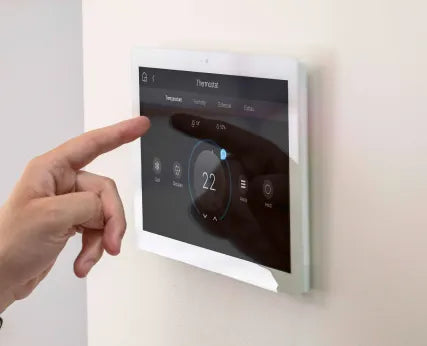There was a time when security cameras simply recorded everything passively. We stared at blurry footage, trying to piece together what happened after the fact. Now, things have changed. Welcome to the era of smart cameras—devices that not only “see” but also “understand” what they observe, shifting your home or business from passive monitoring to proactive protection.
But what truly makes a camera “smart”? How does it differ from a conventional security camera? The answer lies in its built-in intelligence—AI camera technology. This technology can analyze video in real time, distinguishing critical events from everyday motion. This guide will take you deep into every aspect of smart cameras, showing you how to leverage video analytics for unprecedented security and insight.
What is a Smart Camera? How Does It Work?
At its core, a smart camera is a video recording device equipped with processing power and advanced software, allowing it to analyze the footage it captures. Unlike systems that simply stream footage to a recorder, smart cameras can perform complex tasks on the device itself (known as edge computing) or in the cloud.
This means the camera can:
- Distinguish objects: It can perform person detection, and recognize vehicles, animals, or even packages.
- Identify specific features: Advanced systems can deliver facial recognition, identifying authorized personnel or flagging unwanted visitors.
- Send intelligent alerts: You’ll only receive crucial motion alerts—not a ping every time a leaf falls or light shifts.
- Generate actionable data: Gain insights that go beyond security, such as foot traffic counts or customer behavior patterns.
Simply put, it’s a thinking observer that filters out the noise and surfaces only what matters.
Why Choose a Smart Camera: Core Advantages
Upgrading to a smart camera system offers much more than sharper video. Whether you’re a homeowner or a business owner, it’s a strategic decision that brings significant value.
For Homeowners:
- Real Peace of Mind: Receive alerts only when truly important events occur (like someone approaching your door), not whenever a car drives by.
- Faster Response: With precise alerts, you can immediately view the live feed and use two-way audio to talk to visitors or deter intruders.
- Reliable Evidence: High-resolution video (like 4K resolution) and robust night vision ensure crystal-clear detail even in poor lighting.
- Smart Home Integration: Tie your camera into your smart home integration system for automated actions, such as lights turning on when motion is detected.
For Businesses:
- Proactive Loss Prevention: Get real-time alerts during theft or vandalism—not the next morning.
- Operational Insights: Use video analytics to create heatmaps and understand in-store movement, optimizing store layout and product positioning.
- Enhanced Employee Safety: Monitor sensitive areas, ensure only authorized personnel have access, and record all safety incidents.
- Multi-site Management: Remotely monitor all locations from a central platform to ensure consistent security policies.
Unlocking Key Features: Must-Haves for Smart Cameras
The true power of smart cameras lies in the combination of advanced features.
- Smart Detection Types: Move beyond basic motion detection with person detection, vehicle detection, package detection, and even sound detection (like glass breaking).
- High Resolution & Wide Dynamic Range (WDR): 4K resolution delivers incredibly sharp images, while WDR balances bright and dark areas, allowing you to see every detail in challenging lighting, such as entryways facing windows.
- Outstanding Night Vision: Advanced infrared (IR) night vision or “starlight” sensors deliver clear color or black-and-white images even in near-total darkness.
- Two-Way Audio: Built-in microphones and speakers let you hear what’s happening and communicate remotely.
- Privacy Zones: Define specific areas within the camera’s view to blur, protecting neighbors’ privacy or shielding sensitive regions from recording.
Quick Poll: Which smart detection feature matters most to you? Person vs. vehicle detection, or package delivery alerts?
Connectivity & Storage: Building a Reliable System
How your cameras connect and where footage is stored are critical for reliability and ease of use.
Connectivity Options
- Wi-Fi Cameras: Flexible, easy to install with no wiring, but require a strong, stable Wi-Fi signal.
- PoE Cameras: Powered over Ethernet (PoE), a single cable handles both power and data. This setup offers the most stable and reliable connection—ideal for professional installs.
- Compatibility Standards: Look for support of ONVIF or RTSP protocols so your cameras, network video recorders (NVR), and video management systems (VMS) work seamlessly, even across different brands.
Storage Options
- Local Storage: Store video on a local microSD card or a networked NVR/VMS. You have full data control and no monthly fees, but you’re responsible for hardware security and maintenance.
- Cloud Storage: Footage is securely uploaded and stored on remote servers. Access recordings anytime, anywhere, and rest assured your crucial video is safe even if the camera is stolen or damaged. This option usually requires a subscription.
Pro Tip: Consider a hybrid approach—use the NVR for continuous 24/7 local recording, and back up important motion clips to the cloud for key evidence.
Deployment Best Practices: Tips for a Strong Installation
Camera placement and configuration have a huge impact on performance.
- Strategic Placement: Install cameras to cover all entrances, exits, and high-value zones. Mount at a height that avoids easy tampering, but still captures faces clearly.
- Lighting Considerations: Don’t aim cameras directly at the sun or bright lights. Use WDR to handle tough scenes, and ensure there’s adequate lighting at night or choose cameras with strong night vision.
- Set Privacy Zones: During initial setup, define privacy areas to respect others and avoid legal issues.
- Network Planning: For PoE cameras, map out cable runs in advance. For Wi-Fi cameras, use a network tool to test signal strength at your planned installation points.
- Network Security: Change default passwords, enable two-factor authentication, and keep firmware up-to-date. These basics help protect your system from cyber threats.
Action Checklist: Before starting, sketch your property and mark key coverage areas. This helps you and Linko Smart Technology’s experts discuss the optimal camera layout.
Measuring Value: From Incident Recording to ROI
How can you prove your investment in smart cameras is worthwhile? A clear measurement framework is essential.
- Key Performance Indicators (KPIs):
-
- For Security: Decrease in theft/break-ins, reduced police response times, fewer false alarms.
- For Operations (Business): Heatmap-driven retail conversion boosts, higher staff compliance, shortened customer queues.
- Data Analytics Applications:
-
- Heatmaps: Visualize where guests or customers congregate most often.
- People Counting: Track the number of people in an area for marketing or staffing purposes.
- Dwell Time Analysis: Measure how long visitors linger in front of specific displays.
By setting clear goals and tracking relevant metrics, you can clearly demonstrate the financial and operational value of your smart camera system.
Looking Ahead: The Evolution of Smart Cameras
Camera technology is advancing rapidly, leading to smarter and more powerful devices in the near future.
- Edge AI: More analytics will run directly on the camera, resulting in faster responses, less data transfer, and improved privacy.
- Multi-Sensor Fusion: Devices will fuse visible, thermal imaging, and audio sensors for more reliable detection under any conditions.
- Generative AI Summaries: Soon, systems will auto-generate summaries or highlight reels of key events over a day or week, saving you hours that would otherwise be spent watching footage.
Partnering with Linko Smart Technology
Successfully deploying a smart camera system is about much more than mounting a few devices on the wall. It requires comprehensive planning—consultation, hardware selection, professional installation, system configuration, and ongoing technical support.
At Linko Smart Technology, we’re end-to-end solutions experts. We start with your unique needs, recommend the best hardware, install everything seamlessly, and make sure you get the most out of your new system.
Ready to protect your world with smarter eyes? Contact Linko Smart Technology today for a free consultation or to schedule a pilot project.
Frequently Asked Questions (FAQ)
1. How much does a smart camera system cost?
Pricing varies widely based on project scope, number and type of cameras, storage options, and which advanced analytics features you want. Our focus is on long-term value—we make sure your investment pays off.
2. Is installation complicated? How long does it take?
For professionals, a typical home or small business system can be installed and configured in a single day. We conduct a site survey and give you a clear installation plan in advance.
3. How much storage do I need?
It depends on the number of cameras, resolution, recording frame rate, and how long you want to retain footage (data retention policy). Our experts will calculate the best storage plan for you.
4. How is my privacy protected?
We take your privacy extremely seriously. Our recommended systems offer robust cybersecurity features like end-to-end encryption and privacy masking. For cloud storage, we only partner with reputable vendors committed to strict data protection laws.
5. What kind of maintenance do smart cameras need?
The hardware itself needs little maintenance. Mainly, check lenses for cleanliness and update software/firmware via our management platform to keep your system secure and feature-rich.
6. What happens if my network goes down?
Many smart cameras and NVR systems continue recording locally to an SD card or hard drive during outages. Once connectivity is restored, recordings can sync with the cloud so you never lose critical evidence.




